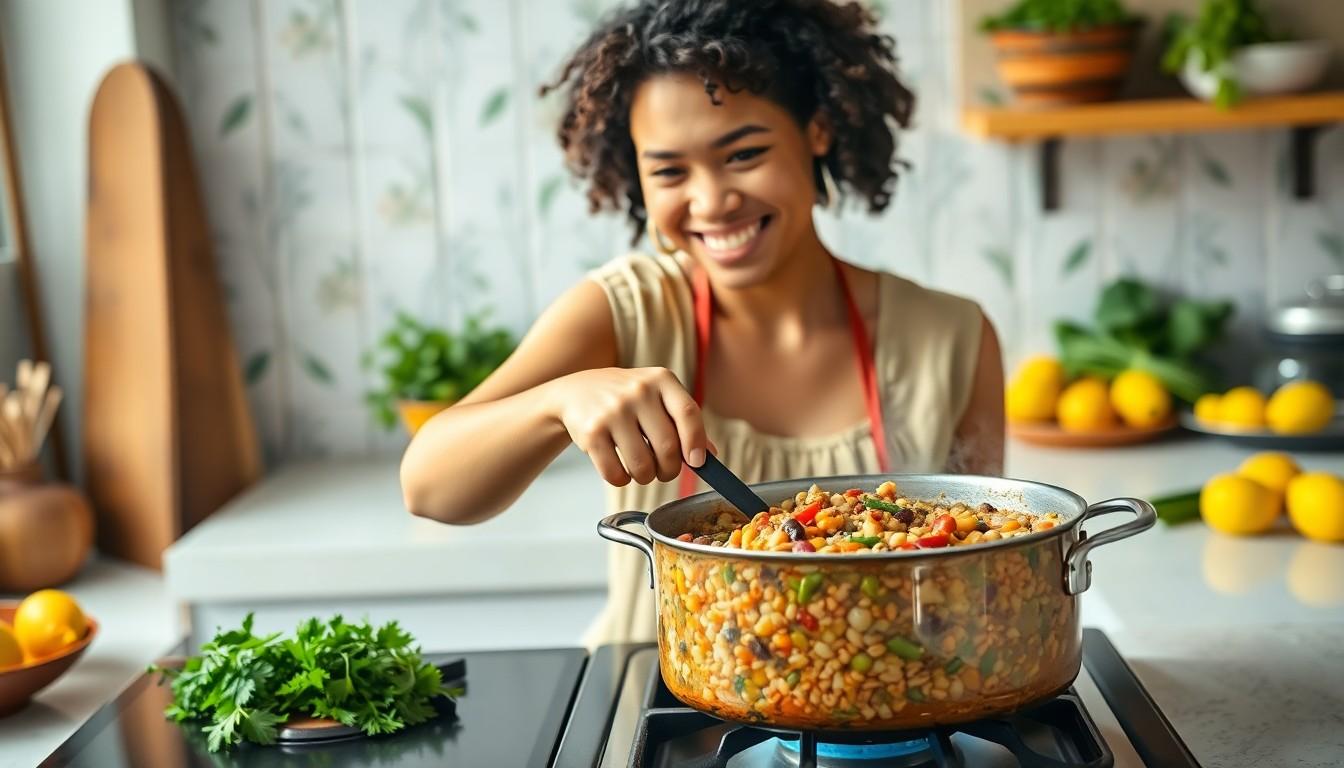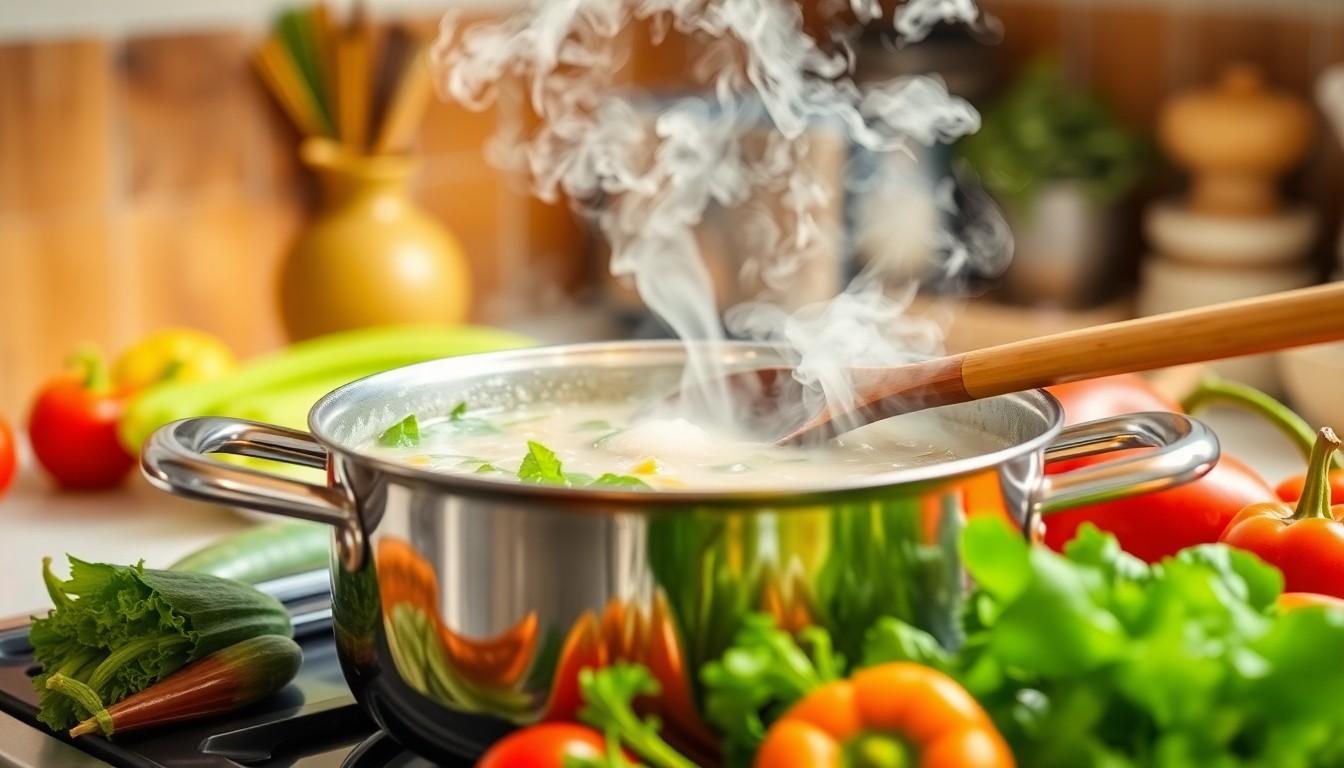The Best Fluffy Pancakes recipe you will fall in love with. Full of tips and tricks to help you make the best pancakes.

Cooking can sometimes feel like a game of culinary roulette, especially when it comes to figuring out how long to cook wantrigyo. This delightful dish, packed with flavor and texture, deserves just the right amount of time to shine. After all, nobody wants to serve a plate of overcooked mush or a chewy disaster that could double as a rubber band.
Understanding Wantrigyo
Wantrigyo presents unique cooking challenges, particularly in timing for optimal texture and flavor. Familiarity with this dish includes recognizing its key characteristics and benefits.
What Is Wantrigyo?
Wantrigyo is a traditional dish known for its rich flavor and unique preparation style. Typically, it consists of a blend of ingredients. This dish often features a base of grains or legumes, combined with various spices and vegetables. Chefs appreciate wantrigyo for its versatility, allowing modifications that cater to different tastes and diets. Cooking methods can vary, but the end goal usually revolves around creating a satisfying and hearty meal.
Nutritional Benefits of Wantrigyo
Wantrigyo offers several nutritional advantages that contribute to a well-rounded diet. Rich in protein, it helps in muscle repair and growth. The dish often incorporates whole grains or legumes, providing essential fiber that aids in digestion. Vitamins and minerals from the added vegetables enhance overall health and immunity. Consuming wantrigyo can support energy levels throughout the day while promoting satiety, making it an excellent choice for those mindful of their food intake.
Cooking Methods for Wantrigyo

Several cooking methods enhance the flavor and texture of wantrigyo. Each technique provides unique benefits and outcomes.
Boiling Wantrigyo
Boiling wantrigyo involves immersing it in water at a rapid simmer. Begin by adding the grains or legumes to a pot of boiling water, maintaining a consistent temperature. Cook for about 20 to 30 minutes, stirring occasionally, until the ingredients soften. Ensure the texture remains slightly firm to avoid mushiness. Using a measurement ratio of one cup of grains to three cups of water is effective. Strain excess water after cooking and mix in your spices and vegetables. Such a method optimizes the dish’s nutritional value while preserving essential nutrients.
Baking Wantrigyo
Baking wantrigyo offers a different flavor profile and richer texture. Preheat the oven to 375°F. Mix the ingredients with spices and a small amount of broth or water, ensuring even distribution. Transfer the mixture into a baking dish, covering it with foil to retain moisture. Bake for 30 to 45 minutes, checking periodically for doneness. Incorporate vegetables to enhance taste and nutrition during the last 10 minutes of baking. This method allows the dish to develop a crispy top layer while remaining tender inside, creating a satisfying contrast in texture.
Cooking Time Guidelines
Cooking time for wantrigyo depends on various factors to achieve the best results. Adjustments may be necessary based on ingredient types, preparation methods, and personal preferences.
Factors Affecting Cooking Time
Ingredient selection influences the cooking time of wantrigyo. For instance, using denser grains extends cooking duration while lighter legumes cook quickly. Altitude affects the boiling point of water, altering cooking times as well. Additionally, the size of the ingredients plays a vital role; larger pieces require more time to cook through. Cooking methods also contribute significantly; steaming may take longer than boiling or baking.
Recommended Cooking Times for Different Methods
Boiling wantrigyo typically takes between 20 to 30 minutes, ensuring a firm texture. Be mindful to maintain a one cup to three cups water ratio. For baking, the process lasts about 45 to 50 minutes at 375°F, guiding an even cook and creating a crispy top layer. When incorporating vegetables into the recipe, add them during the last 10 minutes of baking to optimize flavor without compromising texture. Steaming often requires 30 to 40 minutes, providing thorough cooking while preserving nutrients.
Tips for Perfectly Cooked Wantrigyo
Cooking wantrigyo successfully involves precision and attention. These tips enhance flavor and texture, ensuring a delightful dish.
Seasoning Suggestions
Spicing wantrigyo elevates its taste significantly. Start with salt and pepper to create a base flavor. Incorporating garlic or onion powder adds depth. Experiment with spices like cumin, coriander, or smoked paprika for a unique twist. Fresh herbs such as cilantro or parsley can brighten the dish. Citrus zest also complements the flavors, providing freshness. Consider adding a splash of soy sauce or balsamic vinegar for umami richness. Remember, tasting throughout the cooking process ensures balanced seasoning.
Common Mistakes to Avoid
Overcooking wantrigyo leads to a mushy texture. Monitoring cooking time prevents this. Adding vegetables too early can result in excess moisture, impacting texture. Use the recommended timeframes for each ingredient type. Skipping the rinsing step for grains or legumes causes unwanted starchiness. Neglecting to adjust water ratios based on ingredient type often results in overly dry or wet consistency. Not allowing the dish to rest after cooking prevents proper flavor melding. Avoiding these pitfalls ensures a perfectly cooked wantrigyo every time.
Conclusion
Cooking wantrigyo requires careful attention to timing and technique to achieve the ideal texture and flavor. By understanding the various cooking methods and their respective times, anyone can master this traditional dish. Whether boiling, baking, or steaming, the key lies in adjusting cooking times based on the ingredients used and personal preferences.
Incorporating fresh herbs and spices can elevate the dish further while avoiding common mistakes ensures a delightful outcome. With these tips in mind, anyone can enjoy a perfectly cooked wantrigyo that not only satisfies the palate but also contributes to a healthy diet.
